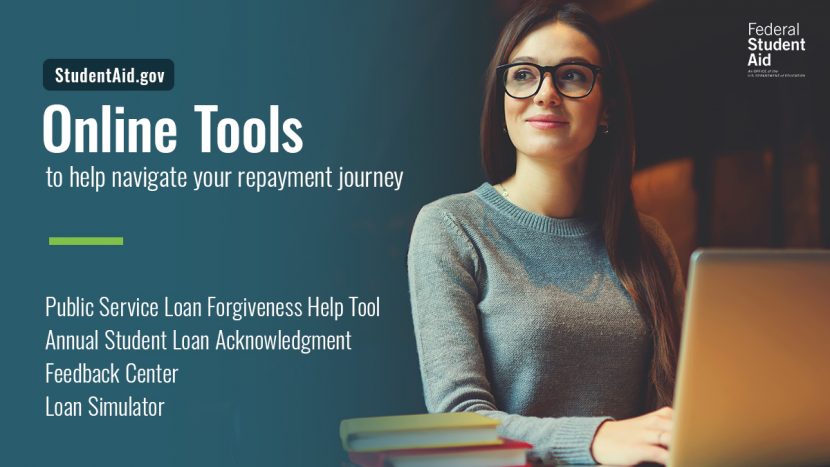By: Chief Operating Officer Mark Brown, Federal Student Aid
Summer is here, and I’m sure that for many of you, summer doesn’t look quite the same as it has in the past. The COVID-19 emergency has led all of us to change our day-to-day lives in order to stay healthy, and I hope that you’ve been able to weather this storm and are looking for ways to safely enjoy this time of year. Here at Federal Student Aid (FSA), we’ve had to make some major adjustments to how we do business, and we realize that it’s a challenging and disruptive time for many of you. I encourage you to visit StudentAid.gov/coronavirus, which has information about COVID-19 and the federal student aid programs, including answers to frequently asked questions. Additionally, if you’re a student loan borrower, you can expect to hear from us in the coming months about how we’ll be supporting you as you return to repayment following the student loan relief measures Congress put in place through the CARES Act.
I want you to know that even with all of the changes we’ve had to make, we’re working as hard as ever to keep empowering students, parents, and federal student loan borrowers to better manage their federal aid. In this third post in the “Keeping the Promise” series, I’d like to share some exciting new features on StudentAid.gov, our front door on the web for the most-trusted information, tools, and resources about federal student aid. In recent months, we’ve introduced items like an employer database in the Public Service Loan Forgiveness (PSLF) Help Tool and the brand-new Annual Student Loan Acknowledgment.
We know that PSLF gets a lot of attention, and we realize that you may not always clearly understand the eligibility criteria. From examining PSLF application data, we know that lots of people are applying for loan forgiveness before they’ve met the criteria. For example, more than 80 percent of PSLF applicants were not yet eligible for forgiveness—at the time they applied—because they didn’t have eligible loans that were in repayment for 10 years. Clearly, our communications need to be more specific, and we’re taking steps and listening to your feedback.
That’s why in 2018, FSA launched the PSLF Help Tool, which helps you understand your eligibility for loan forgiveness under PSLF. We’re now adding an employer database to the tool. Now, you’re able to input your employer’s Employer Identification Number (EIN) to know if your employer is eligible, ineligible, or likely ineligible to meet the qualifying employment criterium for PSLF. We think this resource will provide you even more clarity about successfully navigating the program.
And, your success is exactly what we had in mind when we launched another resource, Loan Simulator. This tool allows you to simulate potential repayment options based on your goals, like paying your loans down faster or reducing the amount of interest you’ll pay on your loans.
We know that behind every student loan account is a student or parent, and your road to repayment is as unique as you are. We want to provide everyone with resources to navigate repayment. So, we’ve updated the Loan Simulator to add additional repayment plan scenarios, specifically for those of you who have a variety of loans, such as a combination of Direct Loans, Perkins Loans, and Federal Family Education Loan (FFEL) Program loans. Later this year, we’ll release another version of Loan Simulator that helps you understand what your monthly payment will look like should you want to return to school and borrow more federal student loans.
We also have a new resource for students who are currently enrolled in college or career school: the Annual Student Loan Acknowledgment. If you’re a new borrower, this tool is designed to help you get a sense of what your loan balance, monthly payment, and expected salary could be based on the school you plan to attend and your program of study. If you’re a seasoned borrower, the Annual Student Loan Acknowledgment will show you how much you have borrowed to date, how close you are to your lifetime borrowing cap, and what you can expect your future monthly payments to be. We’re hoping that this tool will help you become a more informed borrower and eliminate any surprises down the road.
Finally, we want to tell you AND show you that your experiences with the federal student loan programs matter to us. That’s why we have created the Feedback Center on StudentAid.gov. There, you can use this tool to submit a complaint, report an issue, provide us with feedback, or manage an open case. You’ll also now be able to view the status of your case, upload new documentation, and add messages that will be reviewed by a customer service representative. This information is very important to me; in fact, I get briefed weekly on what feedback we’re getting from our customers, so please keep sending us your thoughts and experiences.
We’re excited about all of this progress … progress we’re making for you. I’ll write again soon to share more new tools and upgrades that will improve your experience with Federal Student Aid. In the meantime, check out these new features and let us know what you think!

